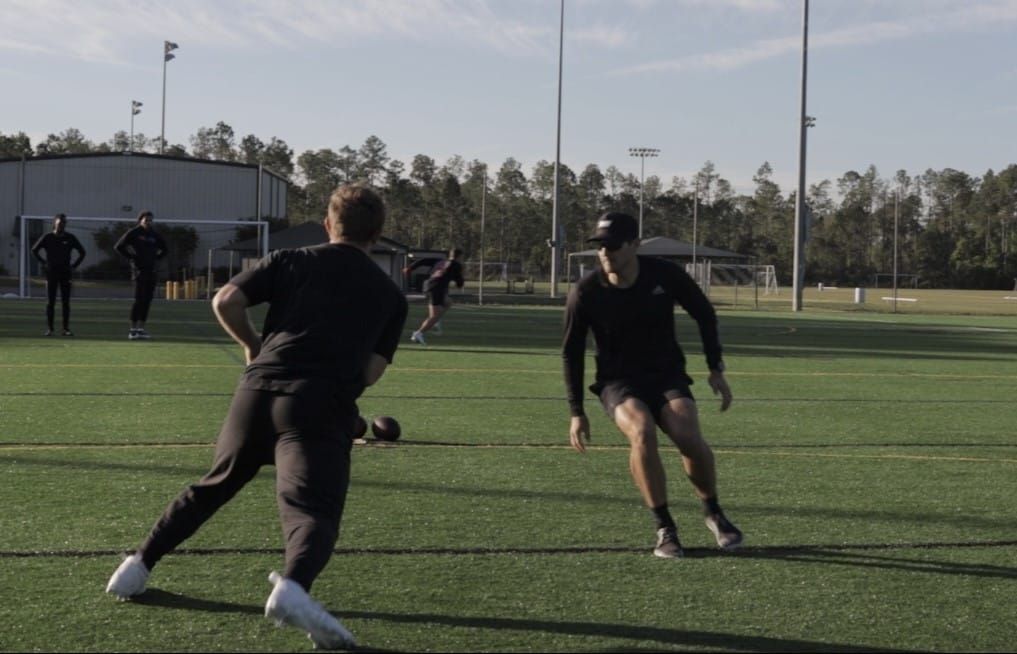Ditch the Cones & Ladders: How Realistic Training Improves Quarterback Performance

If you've ever questioned why quarterbacks still run cone and ladder drills, you’re not alone. These drills look great for social media—lots of fast feet and fancy movements—but they’re missing the mark for actual on-field performance. It’s necessary to talk about why the predictability of cone and ladder drills makes them a less effective training tool for quarterbacks, and what can be done better. Inspired by Rob Gray’s work, especially his book How We Learn to Move, we’re diving into the benefits of making practice more unpredictable and game-relevant.
If you want QB-specific throwing, lifting, and sprint training customized for you with NFL-level systems, take the assessment and get the app at kinetex.co. For insights on quarterbacking and throwing biomechanics, subscribe to the blog.
The Problem with Predictable Drills
Cone and ladder drills are consistent, structured, and predictable. While there’s nothing inherently wrong with predictability, it's not what you’re facing on the field. In a real game, nothing goes exactly as planned—your movements aren’t dictated by cones laid out in a perfect sequence but by a rusher breaking through the line or a receiver breaking off a route. The challenge is that drills like these don’t replicate the messy, dynamic, and reactive environment of a football field. They train you to be quick—but quick in a way that rarely, if ever, translates to actual game situations.
The Better Approach: Random Movement Drills
Instead of choreographed drills, training should simulate the unpredictability of a game. Enter random movement drills: imagine a drill where a coach pushes you off your spot without warning and then you deliver a throw. Now, you’re not just shuffling through pre-set movements—you’re reacting. This taps into what Rob Gray calls the "representative learning design," which emphasizes creating practice situations that closely mimic what an athlete will experience in competition. The idea here is to make your training look like your playing environment, allowing for the adaptive skill development that quarterbacks truly need.

Decision-Making Drills: The Mental Game
Training isn’t just about where your feet go. It’s about processing information and making the right decision—fast. Picture this: instead of simply running through a ladder then throwing at a target, you’re tasked with throwing between two wideouts, with a single defender to read. Your job is to read that defender, and throw opposite of where he moves. This type of drill forces you to think, adapt, and execute in the same way you will in a game.

Taking Notes from Rob Gray
Rob Gray’s research has been pivotal in understanding how athletes learn to adapt under pressure. According to Gray, effective practice has to create conditions that encourage athletes to become better decision-makers, not just technicians of pre-planned movements. For quarterbacks, this means creating an environment where they are forced to read, react, and execute under conditions that are never the same twice—much like what they’ll see on Sundays.
The Takeaway
Football is chaos. The best quarterbacks are the ones who can navigate that chaos most effectively. If you’re serious about getting better as a quarterback, it’s time to leave the cone drills for warmups and start training in ways that will actually translate to your performance on the field. Challenge yourself with random movement drills and decision-making scenarios. Not only will this make your training more effective, but it will also make it a lot more fun—and a lot more like the game you love.
If you want QB-specific throwing, lifting, and sprint training customized for you with NFL-level systems, take the assessment and get the app at kinetex.co. For insights on quarterbacking and throwing biomechanics, subscribe to the blog.
